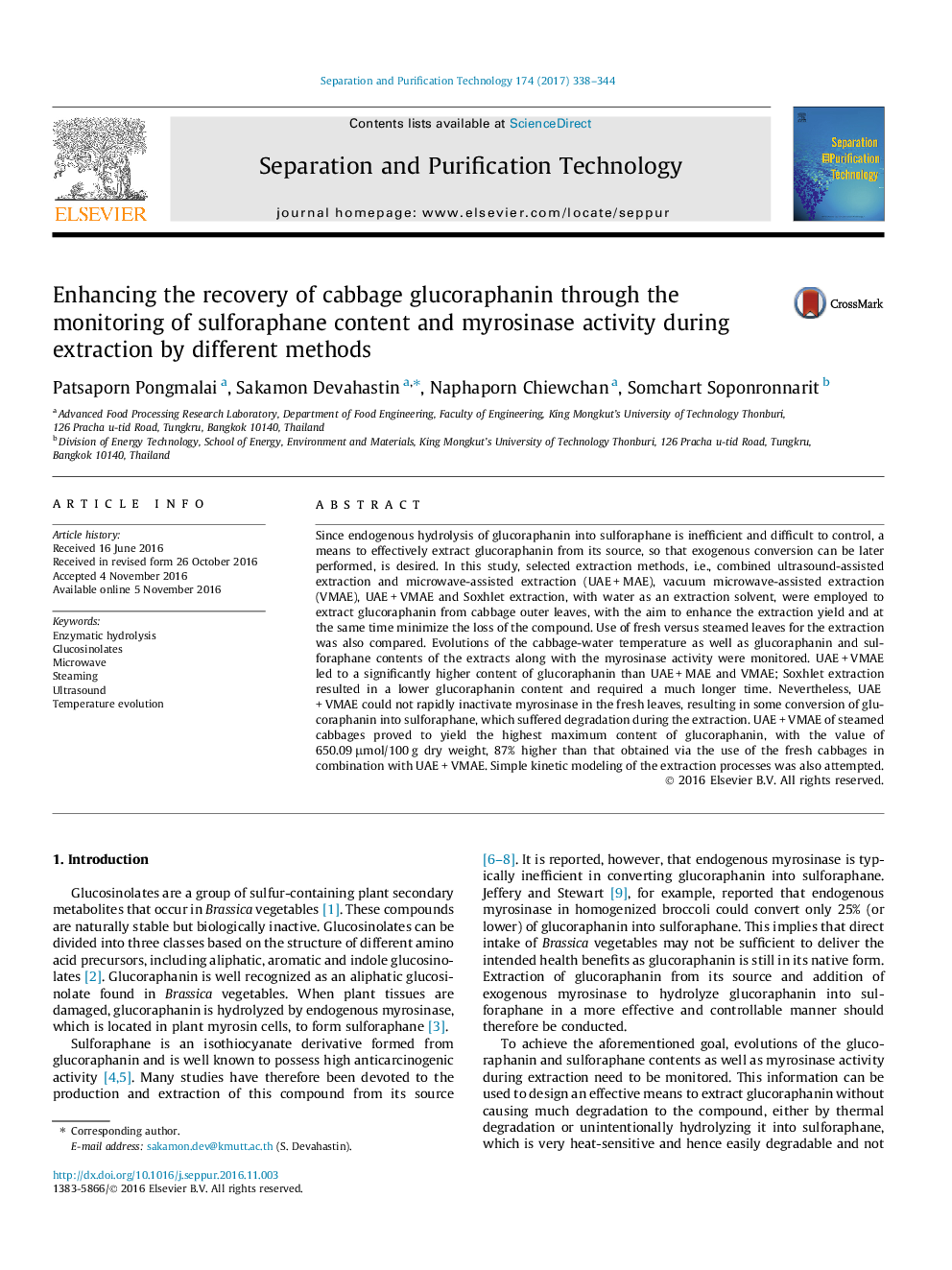| Article ID | Journal | Published Year | Pages | File Type |
|---|---|---|---|---|
| 4990195 | Separation and Purification Technology | 2017 | 7 Pages |
Abstract
Since endogenous hydrolysis of glucoraphanin into sulforaphane is inefficient and difficult to control, a means to effectively extract glucoraphanin from its source, so that exogenous conversion can be later performed, is desired. In this study, selected extraction methods, i.e., combined ultrasound-assisted extraction and microwave-assisted extraction (UAE + MAE), vacuum microwave-assisted extraction (VMAE), UAE + VMAE and Soxhlet extraction, with water as an extraction solvent, were employed to extract glucoraphanin from cabbage outer leaves, with the aim to enhance the extraction yield and at the same time minimize the loss of the compound. Use of fresh versus steamed leaves for the extraction was also compared. Evolutions of the cabbage-water temperature as well as glucoraphanin and sulforaphane contents of the extracts along with the myrosinase activity were monitored. UAE + VMAE led to a significantly higher content of glucoraphanin than UAE + MAE and VMAE; Soxhlet extraction resulted in a lower glucoraphanin content and required a much longer time. Nevertheless, UAE + VMAE could not rapidly inactivate myrosinase in the fresh leaves, resulting in some conversion of glucoraphanin into sulforaphane, which suffered degradation during the extraction. UAE + VMAE of steamed cabbages proved to yield the highest maximum content of glucoraphanin, with the value of 650.09 μmol/100 g dry weight, 87% higher than that obtained via the use of the fresh cabbages in combination with UAE + VMAE. Simple kinetic modeling of the extraction processes was also attempted.
Related Topics
Physical Sciences and Engineering
Chemical Engineering
Filtration and Separation
Authors
Patsaporn Pongmalai, Sakamon Devahastin, Naphaporn Chiewchan, Somchart Soponronnarit,
